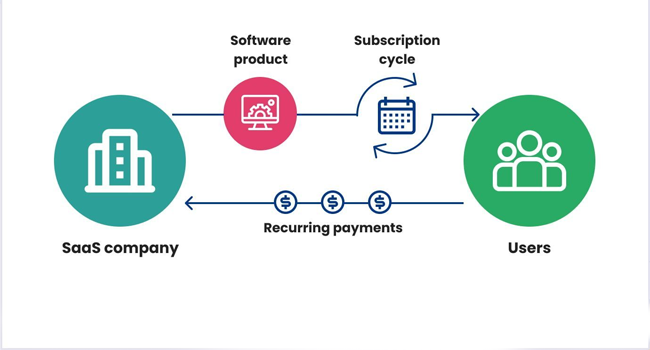Ultimate Guide to Start Ecommerce Business

Starting an e-commerce enterprise is an exciting venture that opens doorways to a global of possibilities inside the digital marketplace. Whether you are a budding entrepreneur or a longtime commercial enterprise trying to amplify your attainment, this closing manual will walk you through the critical steps and techniques to launch a hit e-commerce commercial enterprise.
1. Define Your Niche and Target Audience:
Before diving into the e-commerce landscape, outline your niche and identify your target market. Consider your passions, understanding, and marketplace demand. An area of interest consciousness allows you to differentiate your commercial enterprise and tailor your services or products to a specific target audience, growing the probability of attracting unswerving customers.
2. Conduct Market Research:
Thorough market research is the foundation of a successful e-trade business. Analyze industry trends, competitor offerings, and patron possibilities. Identify gaps inside the market wherein your enterprise can provide particular costs. Understanding the competitive panorama and marketplace dynamics allows you to make informed selections and position your e-commerce assignment strategically.
3. Choose a Business Model:
Select an enterprise model that aligns together with your dreams and resources. Common e-trade enterprise models encompass:
Retail:
Sell physical products immediately to purchasers.
Dropshipping:
Partner with suppliers who cope with inventory and transport, permitting you to recognize marketing and income.
Subscription Box:
Offer curated products on a recurring subscription foundation.
Print on Demand:
Create custom-designed merchandise which might be produced and shipped on call.
Digital Products:
Sell digital goods, including e-books, software programs, or online courses. Choose a model that fits your product and aligns with your chosen degree of involvement in stock management and achievement.
4. Select a Niche-Relevant Domain Name:
Choose a memorable and niche-applicable domain name for your e-trade website. Your domain name is essential to your brand identity, so ensure it displays your business and is easy for clients to remember. Use area name seek gear to check availability and pick out a call that resonates with your target market.
5. Build a User-Friendly E-trade Website:
Invest in a user-friendly and visually appealing e-trade website. Choose a dependable e-trade platform that aligns with your business needs, including Shopify, WooCommerce, or Magento. Prioritize capabilities like smooth navigation, a stable checkout procedure, and cell responsiveness. Optimize product pages with splendid photographs, distinct descriptions, and clean calls-to-motion.
6. Implement Secure Payment Gateways:
Integrate secure charge gateways to offer your clients an unbroken and stable buying enjoyment. Choose professional charge processors that help multiple payment alternatives, including credit score cards, digital wallets, and famous price strategies. Security is paramount in e-trade, so prioritize structures that adhere to enterprise-fashionable protection protocols.
7. Develop a Robust Marketing Strategy:
Craft a complete advertising approach to pressure visitors and sales on your e-commerce website. Utilize a mixture of digital advertising channels, including:
Search Engine Optimization (search engine optimization):
Optimize your internet site for search engines like Google to enhance visibility in search results.
Social Media Marketing:
Leverage platforms like Facebook, Instagram, and Pinterest to connect to your target market.
Email Marketing:
Build and nurture a subscriber list for focused email campaigns and promotions.
Content Marketing:
Create treasured and tasty content material that attracts and educates your target audience.
Paid Advertising:
Use paid channels like Google Ads or social media advertising to reach a broader target audience.
8. Implement Analytics and Tracking:
Integrate analytics tools and Google Analytics to screen and examine personal behaviour on your e-trade website. Track key metrics, such as website visitors, conversion rates, and patron demographics. Data-driven insights assist you in understanding customer alternatives, optimizing advertising and marketing strategies, and making knowledgeable decisions to decorate the overall performance of your e-commerce business.
9. Prioritize Mobile Optimization:
Given the increasing use of cell devices for online shopping, prioritize cellular optimization for your e-commerce site. Ensure your internet site is responsive and provides a seamless experience throughout numerous gadgets. Mobile-pleasant design complements consumer pleasure and contributes to better conversion costs.
10. Focus on Customer Service:
Exceptional customer support is a key differentiator inside the competitive e-trade panorama. Implement responsive customer support channels, which include live chat, email, and phone support. Address consumer inquiries immediately, offer clear conversations about orders and shipments, and remedy troubles with a patron-centric method. Positive consumer reports make contributions to logo loyalty and effective word-of-mouth.
11. Implement a Scalable Fulfillment Process:
Develop a scalable achievement method which can accommodate growing order volumes. Whether you handle achievement in residence or partner with 0.33-celebration logistics (3PL) carriers, ensure that your shipping and shipping techniques are green, reliable, and obvious. Set clear expectations regarding transport times and expenses to decorate client pride.
12. Leverage Social Proof and Reviews:
Encourage and show off patron reviews and testimonials on your e-trade web page. Social evidence builds trust and credibility among capacity clients. Implement review features allowing customers to share their stories and critique your merchandise. Positive critiques serve as effective endorsements that influence buying choices.
13. Offer Competitive Pricing and Discounts:
Determine aggressive pricing techniques that stabilize profitability with customer price. Monitor competitor pricing and adjust your pricing method accordingly. Consider supplying reductions, promotions, or loyalty applications to incentivize repeat purchases and customer loyalty. Dynamic pricing techniques can assist in optimizing your pricing primarily based on marketplace calls for and competitor pricing fluctuations.
14. Create Compelling Product Descriptions:
Craft compelling, particular product descriptions that spotlight your products’ capabilities and blessings. Use top-notch pix and motion pictures to show off products from one-of-a-kind angles. Transparent and informative product descriptions contribute to purchaser self-assurance and reduce the probability of returns.
15. Build an Email Subscriber List:
Build and nurture an electronic mail subscriber list to set up direct conversations with your audience. Offer incentives, which include discounts or exceptional content, to encourage visitors to subscribe. Implement targeted email campaigns for product launches, promotions, and customized recommendations. Email advertising is a powerful device for fostering customer relationships and driving repeat commercial enterprise.
16. Implement Retargeting Strategies:
Leverage retargeting techniques to re-engage customers who have visited your website but did now not make a purchase. Implement retargeting advertisements on systems like Google Ads or social media to remind capable customers of merchandise they considered. Retargeting enables the maintenance of brand visibility and encourages customers to return and complete their buy.
17. Stay Compliant with E-trade Regulations:
Be aware of and observe e-commerce guidelines and requirements to avoid legal troubles and construct customer trust. Familiarize yourself with consumer safety legal guidelines, statistics, privacy policies, and e-trade-unique regulations in your target markets. Speak your phrases and situations, return regulations, and privacy practices to ensure transparency.
18. Continuously Optimize Conversion Rates:
Regularly check and optimize your website’s conversion charges by accomplishing A/B checking out on diverse factors, including product pages, checkout approaches, and calls to action. Test special variations to become aware of what resonates first-rate with your target audience, which results in better conversion quotes. Continuous optimization contributes to a more streamlined and powerful e-trade revel in.
19. Stay Informed about E-trade Trends:
Stay knowledgeable about emerging trends and innovations in the e-commerce enterprise. Monitor advancements in technology, consumer conduct, and marketplace dynamics. Being proactive in adapting to evolving developments lets your e-trade business competitive and capitalize on new opportunities.
Conclusion:
Launching and developing a hit e-commerce business calls for an aggregate of strategic planning, consumer-centricity, and adaptability to marketplace dynamics. By following these steps and techniques, you can set up a sturdy foundation, entice a devoted customer base, and position your e-commerce business for a lengthy period of achievement. Stay knowledgeable about enterprise developments, including innovation, and constantly refine your approach to meet the evolving desires of your clients. As you embark on this e-trade adventure, remember that determination, resilience, and a dedication to turning in excellent cost are the keys to building a thriving online commercial enterprise. Best of good fortune on your e-commerce entrepreneurial adventure!



